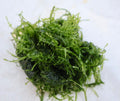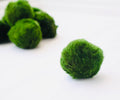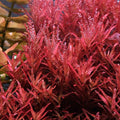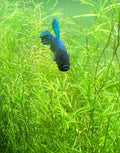7 Tips for Keeping Corydoras: Everything You Should Know
For everyone here who's wondering what I know about Corydoras— I do have a lot of things that I've learned over the past couple of years of keeping them that I'm going to share with you guys—some pieces of advice that will help your Corys to either start breeding or at least feel really comfortable in your tank and definitely prevent them from dying.
These guys are very hardy fish, and if you're having issues with them, you’re not going to have issues if you listen to all the advice. So, without any further ado, let's get started on the advice—and hopefully, I can help you to have a lot of success with your Corydoras.
Tip 1: Add Cover
My first piece of advice is going to be to add some cover to your tank.
Because these guys are bottom dwellers, they're used to seeing fish at the top of your tank, and having some kind of cover so they can't be predated from above is really helpful. If you have a tank with just plants and maybe one ornament and a school of six to eight Corydoras in there with no cover, a lot of the time they’ll try to hide—and they’ll probably be stressed out.
Their natural instincts will make them feel like there's something around—like being in a dark forest in the middle of the night without walls around you.
There are some easy ways to add cover:
- Add gold vine or driftwood to create a canopy.
- Use Anubias or Java Fern on top of it for a cool design.
- Use coconut huts or anything that provides overhead cover.
This helps them feel hidden and protected, which leads to less stress.
Tip 2: Keep Them in Larger Schools
Keep Corydoras in larger schools.
Many people buy one or two and make a "Noah’s Ark" of Corydoras—like one bronze, one albino, one panda, one julii—but they won’t be truly happy that way.
What I recommend is six to eight per type. For example:
- 6–8 Albinos
- 6–8 Bronzes
They are a shoaling fish (not schooling) and feel safer and more comfortable in groups—just like in the wild, where they're found in massive numbers.
Do your research first, then pick the variety you really want before committing to a full school.
Tip 3: Ensure They Are Being Fed
Make sure they're getting food.
Because they're bottom dwellers, food often gets eaten by top-dwelling fish before it reaches them. This can lead to them slowly starving.
Simple fix:
- Ensure food reaches the bottom.
- Drop food manually if necessary.
If you have aggressive eaters like angelfish or rams, they might outcompete your Corys. Be mindful!
Tip 4: Feed Them Worms
Corydoras love worms—especially:
- Blackworms
- Bloodworms
I personally avoid bloodworms for cichlids, but for Corydoras, they are fantastic.
Feeding them:
- Adds excitement to the tank
- Helps with breeding (high in protein)
- Enhances their behavior and digging instincts
Live foods like blackworms are especially good and stimulate natural hunting behavior.
Tip 5: Use a Fine Substrate
Give them the right kind of substrate—specifically:
- Sand
- Fine, smooth gravel
Avoid sharp substrates, even if people say it's "natural." Why risk damaging their barbels (the whisker-like things on their face) that they use to dig?
Fine substrate is better:
- Healthier for their barbels
- More interesting to watch
- Safer and better overall
Tip 6: Add Tannins
Add tannins to the tank.
Tannins are humic acids from:
- Driftwood
- Leaves (like Indian almond leaves)
- Other botanicals
Benefits:
- Reduces pH
- Adds antibacterial and antifungal properties
- Mimics the Amazon environment
- Makes the tank darker, making Corydoras feel safer.
- Can help trigger spawning when pH changes during water changes
Highly recommend adding botanicals to Cory tanks!
Tip 7: Keep Them in Cooler and Faster Water
Keep them in cooler water, if possible.
Ideal temp: 23–24°C
They can handle warmer water (like 28°C), but they don’t love it.
Bonus: Add a powerhead for flow. They generally prefer some water movement—not stagnant tanks.
This isn't about what they can handle; it’s about what they enjoy most.
Avoid keeping sensitive species in hot water with things like Discus. Your bronze and albino Corys might be okay—but others can burn out over time.
















